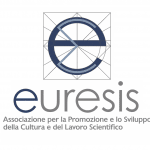Light, Eyes, Meaning. The human experience of seeing
«The eye sees. That is why it is crucial. It is the only one to notice beauty».
P.P. Pasolini
We are acquainted with the reality that surrounds us through our senses. Almost without realising it, these enable us to perceive the wind, temperature, the consistency of what we touch, the chemical composition of the air and our food, movements, and those subtle acoustic vibrations in the atmosphere which we interpret as sounds. But, among them all, perhaps sight is the sense that best enables us to appreciate the extension of space, to acquire awareness of the variety of objects of all sizes and shapes, to interpret symbols, to recognise a family environment or a friendly face. By capturing a small portion of the electromagnetic radiations that pervade space, our eye detects shapes, distances, colours and relations. And in human beings “seeing” becomes a profound experience of relationship with reality and awareness of its meaning. Hence the words “light”, “eyes” and “vision” have always been paradigms of truth and man’s capacity to recognise it.
The exhibition deals with the human experience of seeing, presenting both the physical-chemical aspects involved in the visual process – from the nature of light to the physical makeup of the eye, right up to the transmission of the revealed signals to the brain – and the personal phenomenon of “knowing” and “recognising” through sight. We are therefore invited to become aware of the different levels involved in seeing, each distinct from one another, but deeply jointed in the experience of the human being concerned. In particular, the “inanimate” level of visual perception is the vehicle of an experience of knowledge that radically transcends its material substrate. The “Experience of seeing” is not to be found in any of the sophisticated material organs and processes involved, nor in the combination of these as a whole: it is of another nature.
The person who sees is anxious to know, to understand what he is seeing. Seeing is in itself, intrinsically, an investigation into truth; starting with the structure of the retina, which immediately starts processing the visual data, right up to the conscious self which in seeing triggers its desire for truth as well as its history.
The exhibition shows light as a physical reality: the colours of sunrays, the secrets of the electromagnetic spectrum. The ingenious and surprising physiological solutions are then presented that permit the formation of images, the nature of the eye retina as a sensor, the nerve transmission of the signal and the production of complex brain activity.
Artistic works will also be presented that will show how art helps us to see: art history documents the numerous ways of expression of light, the emphases tied to cultural contexts, the different experiences of theglance. In art, as in reality, colours tones, light angle, and depth of landscape immediately stimulate the memory of the viewer and tie the perceived image to the history and identity of the seeing person.
The exhibition has been organised so as to invite the visitor to immerge in a context favourable to a reflection on the personal experience of seeing: a context made up of lights and colours, simulations and exhibits, suggestions and testimonies that continuously recall the big question relating to the experience of awareness that mysteriously accompanies complex human sensorial activities.
LaTour
Gaetano Previati, La creazione della luce, 1912
The different retina cellular types and their connections, in a drawing by Nobel Laureate Ramon y Cajal (c. 1900)The colours of the spectrum in a soap bubble




